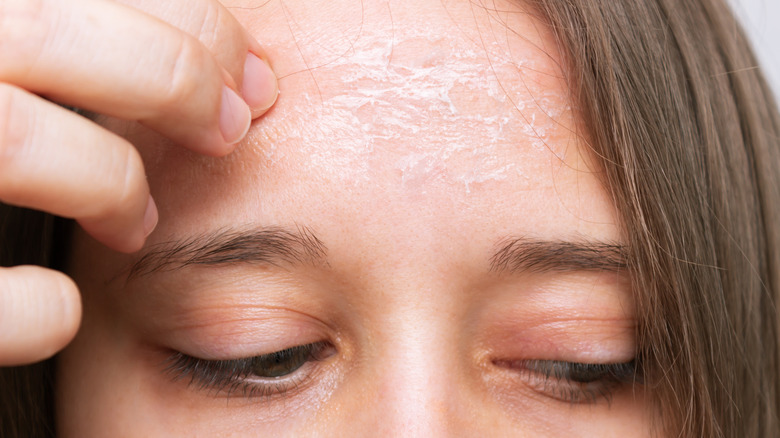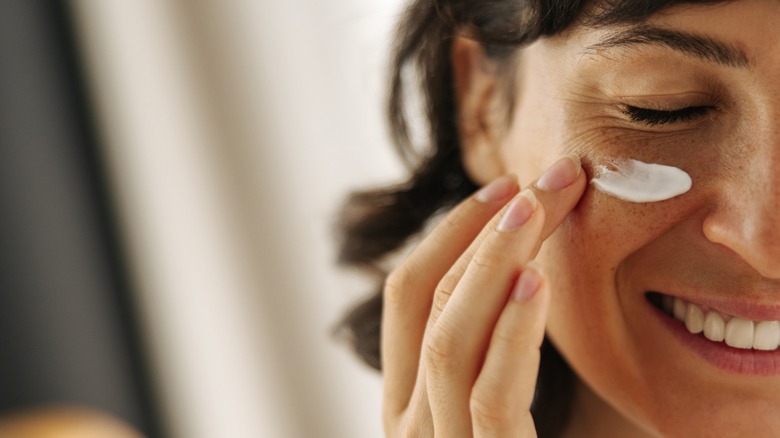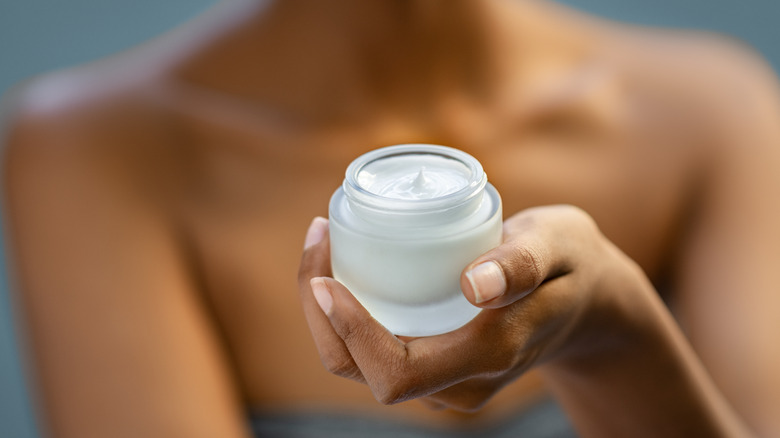Too Much Retinol Can Ruin Your Skin, But There Are Steps You Can Take To Reduce The Damage
Retinol is one of the few ingredients out there that boasts an array of skincare benefits. The vitamin A derivative is an effective solution for inflammation, acne, signs of aging, and skin discoloration, making it a sought-after product in the skincare market.
Retinol works by increasing skin cell turnover, boosting collagen production, and improving your skin barrier, all of which are great pluses to maturing skin. But much like with anything good in life, you can use too much retinol as well. In fact, most dermatologists would recommend starting off slow if you're new to retinol usage. Piling on more than what's recommended is a big mistake that you want to avoid when using retinol, because you'll likely end up ruining the skin you want to make better. Skincare expert Dr. Shereene Idriss told Brides, "Overuse or incorrect use can be either using the product too often/in the wrong spots on your face or starting off with an intense formula that is too strong for your skin. Less is more with retinols and it's important to listen to your skin during the adjustment period."
If you find yourself on the opposite end of this sage advice, you might be experiencing what is called retinol burn or retinol uglies. Your skin is inflamed or purging, there's irritation everywhere, you're peeling and stinging, and your face is red and unhappy. Fortunately, there are some steps you can be taking to reduce the damage.
Try doing this if you're experiencing retinol burn
The first and most important step is to dial back or even stop what you're doing, according to skincare expert Dr. Sam Bunting. Taking a careful look at how much retinol you've been using and if you've been mixing any other active ingredients with your retinol regimen that could be adding to the damage is crucial. You want to simplify what you're doing. Bunting recommended using only an "unfragranced, non-foaming cleanser that supports barrier function, a barrier boosting moisturizer, and a gentle sunscreen suitable for sensitive skin" during the healing process.
Moisturizing is one of the main ways you can combat the damage. Choose a moisturizer that's hypoallergenic and gentle on your skin. Anything that contains the soothing properties of aloe vera and witch hazel could also be a plus. Moisturizers will help reduce the flaking and stinging and also heal your skin over time. Vaseline is a great option that locks in moisture and protects your skin barrier, according to Idriss (via Brides).
For stubborn redness and irritation, you might want to apply some hydrocortisone cream that you can buy at the drugstore. However, exercise care with topical steroids. Idriss recommended only using the cream for a few days, as you don't want to add thinning of skin to your list of problems. Finally, patience is key when waiting out the healing process. Results can take anywhere from 10-14 days, per Bunting.
Can you restart retinol use? Yes you can but follow these preventative steps
You can reintroduce retinol to your skincare regimen after your skin has healed, but you may want to rethink your approach. Slow and steady might be the way to go if you want to avoid ruining your skin. Reduce the frequency and percentage of retinol use for starters. For example, if you were following a daily application routine, dial back to once in two or three days. In fact, using retinol every day, especially if you're starting out, can be a bad idea. Begin with 0.3 percent potency and work your way up (via Brides).
Reducing the frequency might feel challenging at first, but what you're looking for is effective results from the vitamin A derivative, not continuous damage to your skin barrier. For Idriss, consistency trumps intensity. "Using the least intense form of retinol over weeks, months, or even years will allow your skin to adjust more seamlessly to the product and will limit irritation so skin will be nourished, firm, and at rest to receive all of the best benefits," she told Brides. Buffering with a moisturizer and making sure you're getting your SPF protection are also important steps to follow.
Retinol may be able to do wonders for your skin, but the benefits are best enjoyed when you're listening to your skin and treating it gently.


